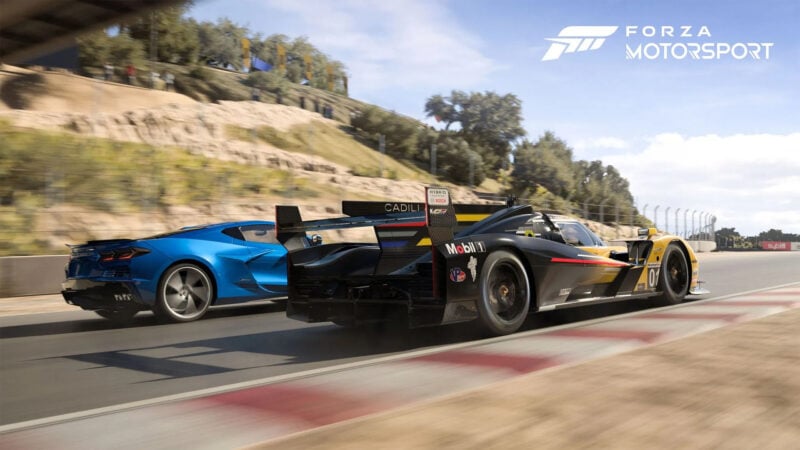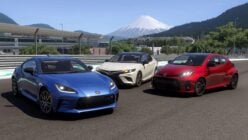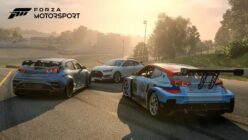
Turn 10’s creative director Chris Esaki has confirmed during the Forza Monthly stream that the Forza Motorsport reboot will be exclusively focused on circuit racing and not feature drag or drift modes or any offroad racing — at least at launch.
Speaking during the stream, Esaki stated that the “new Forza Motorsport has been focused since day one really on circuit racing, with modern race cars and modern production cars”, further adding that this decision has impacted everything from the car list to the physics.
Esaki also makes note of something a lot of fans have noticed regarding the car list released thus far, comprising about a quarter of the game’s roster. Commenting that the list is missing some of what he terms the “oddball” cars, he states that the core of Forza Motorsport is asphalt circuit racing, and that the full car list will reflect that.
That also goes for the track list, which Esaki points out is designed to deliver “clean and competitive racing” in all game modes, with even the fictional circuits made for that purpose. Fans will have noticed that while the Maple Valley layout remains intact, some features — including pit entry — have changed, and that’s with this goal in mind.
Ultimately this means that, at least when it launches on October 10, there won’t be dedicated drift and drag modes — though there will be drag tires and drift suspension — or dirt racing. However Esaki does note that there’s a “long way to go” after launch and more game modes may be supported later.

In the remainder of the stream, Esaki covered the game’s new AI and revisited the physics, particularly the new tire model for Forza Motorsport — bringing some interesting concessions about how Forza Motorsport 7’s physics model handled certain details.
That included a note that in FM7, curbs had no actual collision data and were as flat as the rest of the track. Instead, the team added an artificial “noise” calculation to areas of curbing to produce suspension and tire effects — and this was down to the choppiness of the suspension and tire model, which would react too violently to three-dimensional curbs.
Of course we’ve already heard about the “48x improvement” in the tire model, with eight points of contact instead of one and a sampling rate of 360Hz rather than 60Hz combining to give this number. Esaki showed a short comparison clip of a BAC Mono running over the curbs in FM7 and then the new physics to demonstrate the smoothing effect over what’s now fully modeled curbs.
That’s undoubtedly part of the improvement in the new AI’s lap times, which Esaki showed with a head-to-head comparison at Maple Valley. The new AI, in its raw form, put in a lap 15% faster than FM7’s fastest “Unbeatable” AI and was notably smoother, more precise on braking, and ran a gear or two (or three) higher in some corners.
While it’s still not entirely clear what the “machine-learning” process involved here is (and T10 has been using the same phrase regarding the AI since the original game), it is obviously faster. Esaki states that the way in which the AI uses vehicle inputs — the “AI controller” — is improved, along with 19 ideal driving lines compared to just three.
One thing that’s no longer part of the AI is its human-derived behavior. While the “drivatars” still bear the likenesses and liveries of players in your friends list, they don’t use their racing styles any more. Instead the AI cars run 26,000 laps of each circuit in each car to learn the course.
There’ll be more to come from Turn 10 over the next couple of months, including online multiplayer and full details on wheel support, so watch this space!










